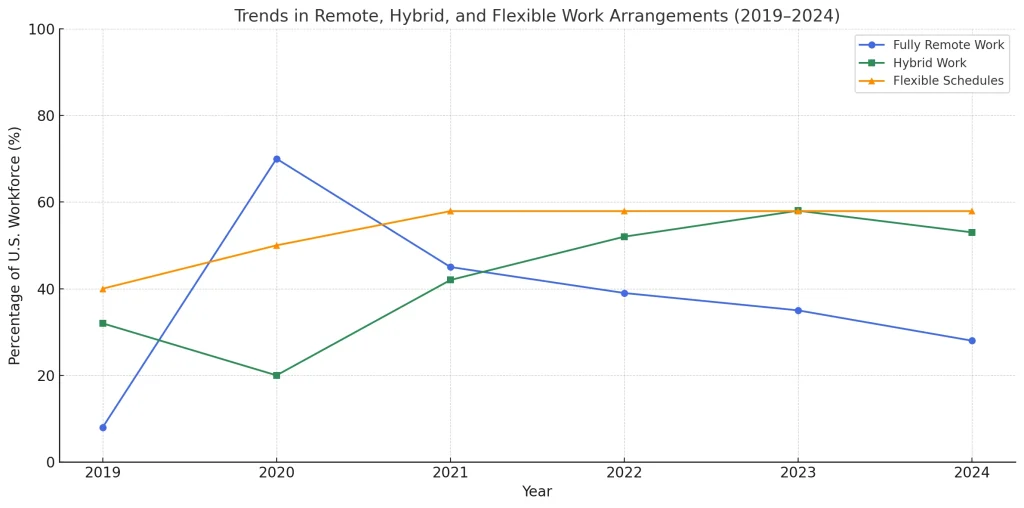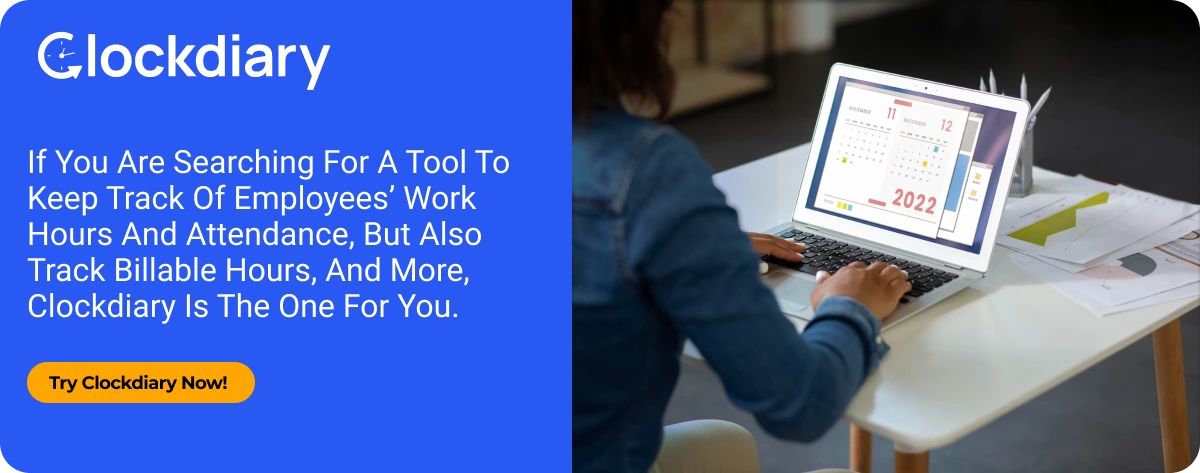

Is your 9-to-5 draining your team—or your life? You’re not alone. A 2023 Workable survey revealed that 66.7% of U.S. workers consider flexible schedules or rotating shifts crucial for balancing personal and professional priorities. Similarly, a PowWowNow study found that 70% of employees feel jobs are more attractive when flexible working schedules are offered. This is where the essentiality of a flex schedule is perceived the most.
Flexible work schedules aren’t just perks—they’re strategic tools for enhancing productivity, retaining talent, and promoting well-being. Whether you’re a startup founder, HR leader, freelancer, or working parent, understanding what exactly is a flex time schedule can help you build a more adaptive and resilient work environment.In this guide, we’ll explore flex schedule meaning, its various types, benefits, challenges, and effective implementation strategies. So, let’s start.
A flex schedule, or flexible work schedule, allows employees to adjust their working hours outside the traditional 9-to-5 framework. Instead of rigid start and end times, team members have the freedom to choose when they begin and finish their workday, as long as job responsibilities are met.
This setup can include compressed workweeks, staggered hours, or fully remote options. Popular among freelancers, startups, remote teams, and working parents, flex scheduling is designed to improve work-life balance, boost productivity, and reduce burnout.
As workplace expectations evolve, schedule flexibility has quickly become a must-have benefit for attracting and retaining top talent. Now, that you have a clear understanding of flexible schedule meaning, let’s explore the different types of flex schedule in the next section.
Flex schedule comes in many forms, each designed to fit different lifestyles, business models, and industries. Here’s a breakdown of the most popular flexible schedule examples:
Employees work their full-time hours in fewer days. For example, instead of five 8-hour days, an employee might work four 10-hour days, enjoying a three-day weekend.
For instance, Japan’s 2025 initiative to implement a four-day workweek aims to improve work-life balance and address demographic challenges.
Flextime, popularized by Wilhelm Haller in the 1960s, lets employees choose their start and end times within agreed-upon limits. As long as core business hours are covered, team members can work when they’re most productive.
Two employees share one full-time position, splitting hours and responsibilities. This type of flexi schedule is ideal for those who need part-time flexibility but want the benefits of a full-time role.
Employees work entirely offsite, either from home or another location. This model is perfect for jobs that don’t require a physical office presence, offering freedom and reduced commute stress.
In this context, we would like to point out that remote work has become increasingly prevalent, with studies showing that around 8.9% of U.S. workers are fully remote.
A combination of office and remote work, hybrid schedules give employees the flexibility to split their time between working from home and onsite, based on personal and business needs.
According to a survey at 595 US firms, 18.1% of US employees work in hybrid mode.

Part-time roles involve fewer hours than full-time positions, often with flexible start and end times. This is a great flex schedule option for students, parents, or freelancers managing multiple gigs.
Used in industries like healthcare and hospitality, shift work divides the day into set periods. Employees choose or are assigned shifts, offering options outside the typical workday.
Employees start and finish work at different times, reducing crowding in workplaces and traffic during peak hours, while still covering the full business day.
In this type of flex work schedule, work is divided into two or more separate parts in a day, such as working in the morning, taking a long break, and returning in the evening.
Employees vary their daily or weekly hours, adjusting their schedules based on workload, personal life, or seasonal business demands.
Apart from the above mentioned types, employees may also consider working in first shift, second shift, and third shift. Implementing these flexible work schedules can enhance employee satisfaction and productivity, catering to the diverse needs of modern workers.

A well-implemented flex schedule can transform the way people work — benefiting both employees and employers in powerful, practical ways. Let’s take a look at some of the most powerful flex schedule benefits:
Flex schedule job lets employees better manage personal and professional responsibilities, making time for family, hobbies, and self-care without sacrificing work commitments. A Gallup study found that employees with flexible schedules reported 24% higher job satisfaction compared to those with rigid hours.
When people work during their most focused, energized hours, they do not procrastinate and productivity naturally increases. Flexibility allows individuals to align work with their personal peak performance times.
By eliminating rigid routines, long commutes, and scheduling conflicts, flex schedule eases pressure and reduces burnout, helping employees feel more in control of their time.
According to a 2020 survey by FlexJobs, 81% of employees reported that flexible work arrangements increased their overall job satisfaction.
Having the freedom to design their workday empowers employees, leading to greater job satisfaction, motivation, and loyalty to the organization.
Flexibility often results in better sleep, healthier eating habits, regular exercise, and lower stress levels — all contributing to stronger physical and mental well-being.
With fewer people in the office at one time or fully remote staff, businesses can save on office space, utilities, and other operational costs. This might come to you as a surprise, but Global Workplace Analytics estimates that businesses save an average of $11,000 per year for every employee who works remotely part-time.
Flex schedule reduces fatigue and distractions, letting employees work in optimal conditions, which boosts both the quality and quantity of output.
Flexibility accommodates personal needs, reducing unscheduled absences and encouraging employees to stay with companies that respect work-life balance.
A survey by LinkedIn found that 72% of talent professionals believe that work flexibility will be very important for the future of recruiting. Modern professionals — especially Millennials and Gen Z — actively seek flex time work schedule options. Offering them makes your company more appealing and competitive.
Giving employees control over their schedules fosters trust and a positive workplace culture, enhancing employee engagement and overall team morale.
In the end, we can say that incorporating flexible work schedules can lead to a more satisfied, productive, and loyal workforce, benefiting both employees and employers.
While flex schedule offers many advantages, they also come with challenges that both employees and employers must navigate carefully.
When home becomes the office, it’s easy for work hours to stretch into personal time, making it harder to fully disconnect and recharge.
It must be pointed out here that a study by the American Psychological Association found that 60% of employees struggle with maintaining these boundaries, leading to decreased productivity.
Without clear start and stop times, employees might overwork, leading to fatigue, stress, and eventual burnout — the very issue flex block schedule aims to solve.
A report by Buffer indicated that over 20% of remote workers struggle with loneliness, impacting team morale and individual motivation.
Remote and staggered hours can limit casual conversations and social connections, making some employees feel isolated or disconnected from the team.
Less face-to-face time can make it harder to build relationships, collaborate smoothly, or earn trust — especially for new hires or remote workers.
While working from home can be freeing, it also brings distractions like family, chores, or personal devices, which may affect concentration and productivity.
We would like to point out here that a study indicated that employees who utilize flex schedule remote jobs report a 15% increase in distractions from household responsibilities, leading to an estimated annual productivity loss of $7 billion across U.S. industries.
When employees work different hours or locations, coordinating meetings, projects, and updates can be tricky without the right communication tools and protocols in place.
With employees working varying hours, coordinating meetings and collaborative efforts becomes more complex, potentially leading to scheduling conflicts and delays.
Without direct supervision, assessing employee performance becomes challenging. Employers may struggle to assess productivity without direct oversight, while employees may find it challenging to stay motivated without structured schedules.
A study by IBM revealed that organizations with a strong culture see a 40% increase in employee engagement, highlighting the importance of intentional efforts to maintain culture.
Flex schedule makes it harder to nurture a strong, cohesive culture, especially when teams rarely meet in person.
If flexibility isn’t offered equally, or if certain roles lack options, it can lead to resentment, disengagement, and perceived favoritism within the team.
A report by Timewise highlights the growing divide in Britain’s workforce due to unequal access to flexible working arrangements, calling for broader implementation to prevent a two-tier workforce.
Addressing these flexible work schedule challenges requires deliberate strategies, including clear communication protocols, equitable policy implementation, and tools to monitor productivity effectively
Successfully rolling out flexible work schedules takes thoughtful planning, clear communication, and the right tools. Here’s how businesses can do it effectively:
According to an article on Harvard Business Review, flexibility policies are ineffective if they are difficult to understand or if employees and managers are unsure how to utilize them .Start with a well-defined policy that outlines who is eligible, what types of flextime schedule is available, and the expectations for communication, availability, and performance.
Effective leadership is crucial in a flexible work environment. However, according to a 2024 Workplace Flexibility Trends Report by TechSmith Corp, nearly 75% of employers have not provided specific training for managers on leading remote and hybrid teams .Equip managers with training on how to manage remote or flex time teams, handle scheduling conflicts, promote trust, and maintain team engagement without micromanaging.
Every flex schedule should be documented, outlining work hours, responsibilities, deadlines, and communication preferences. For example, ActivTrak provides examples of innovative flexible work arrangements that can revolutionize how employees work . This keeps everyone accountable and aligned.
Not every team or role requires the same kind of flexibility. Offer a variety of options — like flextime, compressed workweeks, hybrid setups, or staggered hours — tailored to your team’s unique needs.
Invest in tools like shared calendars, project management and time tracking apps like Clockdiary, and video conferencing platforms to keep communication seamless, track deadlines, and avoid scheduling mishaps.
Check in with employees frequently to gather feedback on what’s working, what’s challenging, and how the flex schedule could be improved.
Regular surveys and open dialogues help identify areas for improvement and ensure that the arrangements meet employees’ needs This, in turn, helps keep the system fair and effective.
Shift focus from clocking in and out to achieving results. Akkodis, a global digital engineering and consulting services company, highlights that knowledge workers prefer performance evaluations based on results,thereby promoting a more driven and flexible workplace culture.
Set clear, measurable goals and evaluate success based on outcomes and contributions, rather than just time spent at a desk. This keeps productivity high while honoring flexibility.
By implementing these strategies, organizations can create a flex schedule at work that benefits both employees and the business.
Managing a maxi flex work schedule successfully requires structure, discipline, and clear communication. Here’s a practical guide to help employees make the most of their flex schedule:
Understand your workload, personal responsibilities, and preferences before selecting a flexible schedule option that suits your lifestyle.
Identify Your Preferred Work Hours and Flexibility Options:
Pinpoint when you’re most productive and choose a flex block schedule or work arrangements that align with your energy peaks and priorities.
As advised by Galt Staffing, presenting a clear plan and suggesting a trial period can make your proposal more compelling.
So, you should always share your flex schedule details with your manager, including start times, availability, and how you’ll meet deadlines.
Use shared calendars and team chats to keep everyone informed and avoid confusion around meetings or project deadlines.
Define Specific, Measurable, Achievable, Relevant, and Time-bound goals to maintain focus and direction
Divide bigger projects into smaller, actionable tasks with clear priorities and deadlines.
Use prioritization techniques like the Eisenhower Matrix to distinguish between urgent and important tasks, ensuring you focus on what truly matters.
Allocate specific time slots for different tasks throughout your day. Time-blocking apps can come in handy here. This method can enhance focus and prevent procrastination.
Incorporate regular short breaks into your full time flex schedule to recharge and maintain high levels of productivity.
Regular meetings with your supervisor can ensure you’re aligned with team goals and receive timely feedback. As highlighted by Beam, consistent check-ins are absolutely essential for better relationships and continuous improvement.
Reach out to your manager or team for guidance and resources when challenges arise.
Monitor how your flex schedule is working for you and your team. Utilizing time and productivity tracking tools like Clockdiary can provide insights into your work patterns.
Be prepared to tweak your schedule based on your findings to optimize productivity and work-life balance.
Implementing flex schedule isn’t just a matter of convenience — it comes with legal responsibilities that employers must carefully manage. Here’s what you need to know:
The FLSA sets rules around minimum wage, overtime pay, and record keeping. Employers must track hours accurately, especially for non-exempt employees working remote or flexible schedules.
Flexible work options must be offered fairly, without discrimination based on race, gender, age, disability, or other protected categories, in compliance with EEO laws.
Also, under the Americans with Disabilities Act (ADA), employers with 15 or more employees must provide reasonable accommodations, which can include flexible work arrangements, to qualified individuals with disabilities.
Remote and flexible work increase the risk of data breaches. Employers must protect sensitive company and client information through secure systems, VPNs, and cybersecurity protocols
Even remote workspaces must meet safety standards. Employers should offer guidance to help employees set up ergonomically sound and safe home offices.
Labor laws can vary by state and city. Employers must stay updated on local requirements around working hours, leave policies, and workplace rights.
Employees have the right to fair pay, breaks, and safe working conditions — whether they work onsite or remotely.
Employment contracts or union agreements may include specific terms about work hours and conditions that must be honored when introducing flexible scheduling options.
Remote and multi-state work arrangements can create tax complexities for both employers and employees, requiring careful financial and legal planning.
Many forward-thinking companies have successfully adopted flexible work schedules, proving that it’s more than just a trend — it’s a smart, sustainable business strategy. Let’s look at how companies with flexible schedules are making it work.
Dell’s Connected Workplace program offers employees schedule flex, remote work options, and compressed workweeks.
The result? Increased productivity, lower real estate costs, and a happier, more engaged workforce. Dell reports that about 60% of its workforce uses flexible work options.
Health insurance giant Humana embraced a hybrid and flex work model where employees can adjust their flex schedules based on personal needs and business demands.
This has boosted job satisfaction and made the company more attractive to Millennial and Gen Z talent.
Privacy-focused search engine DuckDuckGo operates as a fully remote, flex schedule company. Employees choose their hours and locations, supported by a culture of trust and outcome-based performance.
This approach has helped DuckDuckGo grow while maintaining high employee satisfaction and strong collaboration.
UK-based digital bank Monzo introduced flexible working policies, including remote work, job sharing, and staggered hours.
Monzo’s approach has improved team morale and allowed the company to attract talent from diverse backgrounds, improving inclusion and work-life balance.
This global financial institution launched its “Future of Work” initiative, offering hybrid and flex options worldwide. Employees can select from several models, improving engagement and reducing commuting-related stress.
A workforce analytics company, ActivTrak supports a results-driven, flexible work culture. Using its own productivity insights, the company promotes flextime, remote work, and outcome-focused management — proving that maxiflex schedule can be both employee-friendly and performance-oriented.
This renowned workplace consultancy champions flex schedules among its certified companies, linking flexibility to higher trust, lower turnover, and stronger business performance across industries.
These case studies demonstrate that flexible work schedules can lead to increased employee satisfaction, productivity, and overall organizational success.
The future of work is evolving rapidly, with flexibility at its core. Here are the key trends shaping how businesses and professionals will work in the coming years:
What began as a pandemic necessity is now a long-term strategy. Companies worldwide are investing in hybrid and fully remote work models, offering employees greater freedom to choose where and when they work without sacrificing productivity.
We would like to point out her that as of late 2024, hybrid job postings in the U.S. increased from 9% in early 2023 to nearly 23%, while fully remote roles rose from 10% to 15% during the same period. Conversely, fully in-office job postings declined from 83% to 68%, indicating a significant shift towards flexible work arrangements.
As work-life boundaries blur, businesses are placing greater emphasis on mental health, work-life balance, and overall well-being. Expect to see more wellness benefits, mental health days, and full time flex schedule designed to reduce stress and support personal needs.
Artificial intelligence and automation are streamlining repetitive tasks, giving employees more time for strategic, creative work. This tech shift is making it easier to manage flexible teams, monitor performance, and improve productivity without micromanagement.
The gig economy continues to expand. In 2023, freelancers contributed $1.27 trillion to the U.S. economy, reflecting the growing preference for flexible, project-based work. Globally, the freelance market is projected to grow at a compound annual rate of 15%.
The rise of the gig economy means more professionals are choosing freelance, contract, and project-based roles. Flexible work schedules will increasingly accommodate these independent workers, integrating them into teams without traditional 9-to-5 constraints.

One-size-fits-all schedules are fading. Future workplaces will offer customized flex schedule options, allowing individuals to shape their workweek based on personal productivity patterns, life stages, and career goals.
Momentum is building around the four-day workweek. Although only 14% of businesses had implemented this model by 2025, employee support is strong.
Research conducted by Henley Business School found that 78% of employees felt happier and less stressed after transitioning to a four-day workweek. Early trials have shown boosts in productivity, employee happiness, and retention — without sacrificing output.
Flexible work helps support diverse and inclusive teams by removing location barriers and offering adaptable arrangements for parents, caregivers, people with disabilities, and global talent, promoting a fairer, more accessible workforce for everyone.
Clockdiary is a powerful, user-friendly time tracking and attendance solution designed to help businesses of all sizes manage flexible work schedules efficiently. Whether you’re overseeing a remote team, managing a hybrid workforce, or coordinating shift-based roles, Clockdiary offers a comprehensive suite of features to streamline time management and enhance productivity. Alternatively, you can avail of employee attendance tracker Excel templates to track employee attendance. Here’s how Clockdiary helps manage flex schedule:
Here’s how Clockdiary helps manage flex schedule:
It can automatically flag idle time, detect deviations from typical productivity patterns, and suggest optimizations. This empowers managers to take a data-driven approach to enhancing team efficiency without micromanaging.
By integrating these features, Clockdiary empowers businesses to manage flex schedule efficiently, enhance team productivity, and maintain accurate records—all crucial for success in today’s dynamic work landscape. Make this supremely engineered software an integral part of your workforce and you will be good to go.

Frequently Asked Questions:
A flex schedule in the federal government allows employees to vary their arrival, departure, and break times within designated limits, providing more control over their work hours while still meeting core operational needs. This system supports work-life balance and improves job satisfaction without reducing total hours worked or productivity expectations.
In a school schedule, “flex” refers to a designated period where students have the freedom to choose how they spend their time — whether attending extra help sessions, working on projects, or taking a break. It’s designed to give students more control over their learning and manage their academic responsibilities more effectively.
Flexible work schedules are important because they empower employees to balance their professional responsibilities with personal needs, leading to higher job satisfaction, reduced stress, and better overall well-being. For employers, it helps attract and retain top talent, boost productivity, and create a more engaged, loyal workforce.
An example of a flex schedule policy is allowing employees to choose their start and end times within a set window—such as working any 8 hours between 7 a.m. and 7 p.m.—as long as core hours (e.g., 10 a.m. to 3 p.m.) are covered. This policy gives employees autonomy over their schedules while ensuring team collaboration during overlapping hours.
An example of flex time is when an employee chooses to start work at 7:30 AM instead of the traditional 9:00 AM and finishes by 3:30 PM, while still completing their required hours. This arrangement allows individuals to adjust their start and end times around personal commitments, as long as they meet their job responsibilities.